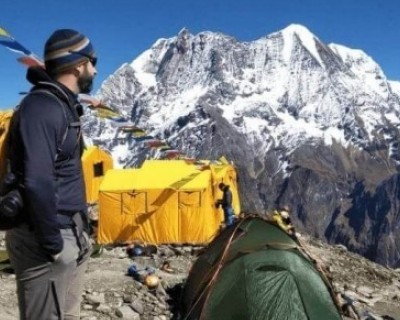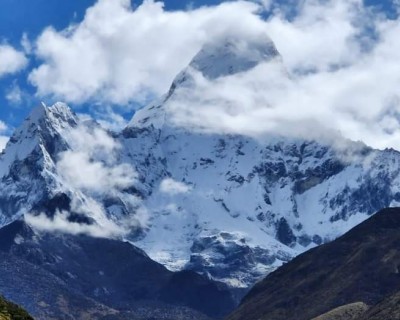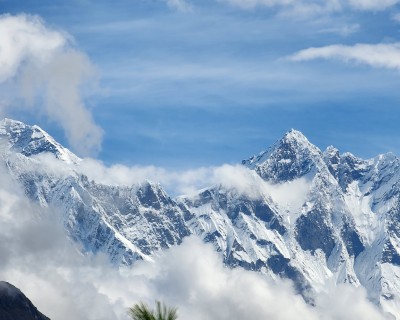Searching for trekking in Nepal, people usually get confused about many things. So here I have listed some frequently asked questions of the Annapurna region by the trekkers.
Most Frequently asked question for Annapurna Base Camp Trek!
Table of Content
Which is the best season for trekking to the Annapurna Base Camp Trek?
The best season for trekking to the Annapurna Base Camp trek is:
Spring Season
The spring season covers the months of February to mid-June. The temperature during this season is 15 degrees Celcius on a sunny day and ranges up to -15 degrees Celcius at night at a high altitude above 4000 meters. Spring is the second busiest season in Nepal for trekking in the remoteness and other beautiful regions. The weather throughout the day during this season is very pleasant and warm. Offer the beautiful scenario of Himalayan flora and fauna, walking through the blooms of rhododendrons.
Monsoon season
This season covers the months of June, July, and August. The average temperature during this time of year is around 15-20 degrees Celcius on a sunny day and drops to -10 to -15 degrees at night. This time of the year is not considered a good time to trek in altitude for any reason due to being the rainy season. The rainy season will be a lot of rain and the trails are also very slippery, and muddy and landslides can challenge your walk.
Autumn season
The Autumn season covers the months of September, October, and November falls in the months of the Autumn Season. The normal temperature during the days falls 15 degrees Celcius with a maximum temperature of 20 degrees Celcius during the sunny day and a minimum of freezing in the early morning and at night. The autumn season is considered the best trekking season in Nepal. The weather throughout the day is very warm, pleasant, and beautiful. Less chance of natural hazards and disasters at high altitudes but you can expect a busy trail during this time due to the peak time to explore the Himalayan and hidden gems of the country.
Winter season
The Winter season holds the months of December, January, and February fall in the months of the winter season. Throughout the season you will experience sold temperature and windy weather. The average temperature during the winter is cold during the morning, the nights to -80 degrees Celcius but on the sunny day it rises to 10 degrees Celcius. There are fewer chances of rain but chances of snow sliding and slippery can abstract your walk.
What food and accommodation do we get in the mountain region?
Trekking in the mountain region, you normally get the local cuisine, which is very fresh and hygienic. We would recommend taking local cuisine which is famously known as “Dal Bhat”. It is rich in every nutrient you need for hiking. Aside from this, you can also see different types of cuisine.
It is pretty hard to find a luxury room in the high mountain region so you should spend your night in a normal lodge, tea house, or sometimes in a tent too.
For the better to book your room comfortably room cause in the peak season during spring and autumn, all the rooms are packed so you may have to share your room with your friends so it is good to be prepared before the trek.
Can we get water bottles in the mountains?
Yes, it is possible to get the water bottles at a high altitude during the trek. But be prepared to pay a higher price. Most of the tea house and restaurants during the trekking offers the facility of water so bottled or purified water. But the price of everything here increases with the price increase. It's better to carry some water purification tablets and personal water bottles to lower your expenses. Even if you don’t want to buy the water, you can get the source of water on the trial and the tea house can fill your water bottles.
Do I need to carry travel insurance?
Of course. So please make sure that you are insured before trekking in any region of Nepal. Even we (the trekking agency) ask for a copy of your travel insurance for booking your trip and preparing other required documentation of your trekking. Having travel insurance means going out on an adventure without having any risk. Trekking above 5500 meters you need to buy medical and mountain evacuation insurance. It's better to buy insurance that covers your helicopter evacuation if in case anything happens when you are trekking above 5500 meters.
How many hours do we need to walk every day?
Normally, when trekking at a high altitude you should be mentally prepared for around 6-7 hours a day but trekking hours also depend upon your fitness level, trekking routes, can change the trekking hours. Walking downhill takes a very short time and is easier compared to the high altitude, which is always tough and slower than expected.
Do we get hot shower facilities in the mountain region?
Well, in the mountain region, you will get hot shower facilities but you have to pay a certain amount to enjoy it. Trekking in the high altitude we would suggest you not take a shower above 4400 meters or take less if possible, to decrease your chances of altitude sickness, common cold, or other sicknesses.
Are there any internet facilities in the Annapurna Trekking?
Well, you will get telephone and wifi facilities in almost every lodge and tea house you stay, but it's quite expensive. We would suggest you get one local number of Ncell for the phone calls and internet connection.
Do I need to carry anything for trekking?
If you are planning to hire a porter then he will carry all your luggage, which means you don’t need to carry your belongings. Below we will talk about the things you should have while trekking in Nepal. Aside from your luggage, you have to carry just your valuable goods in your backpack.
What gear and equipment do I need to include in my packing for Annapurna trekking?
Before starting your packing, you must know that trekking in the different seasons means you need to carry different gear. For example, if you plan to trek in the spring season you need to carry some warm gear as winter has just passed, you need to pack a lightweight dress for the monsoon/summer season and warm and windproof for the autumn and winter seasons.
So here I have listed some gear you need to pack for your trekking:
Traveling bags:
- Day packs
- Duffer bags
- And Puck bags with waterproof covers
Head
- Sunglasses
- Woolen hat
- Sun Hat
- Scarf
- Headlight
Upper body
- Light T-shirt
- Waterproof jackets
- Thermal Vest
- Lightweight thermal tops
- Fleece Jackets
- Pullover
- Women's sports bra, synthetic
Lower body
- Fleece pants
- Waterproof shell pants
- Lightweight walking pants
- Hiking short
- Undergarments
Handwear
- Lightweight fleece gloves
- Heavyweight gloves
- Water and windproof gloves
Footwear
- Hiking boots
- Camp sandals
- Pair of walking poles
- Thick warm wool hiking socks
- The inner socks
Other accessories
- Rain cover
- Sleeping bags
- Liner
- Earplugs
- Trekking poles
- Sunglasses
- Headlight
- Water bottles
- Towel
- Lock
- Waterproof bags
- Camera
- Portable charger
- Books
- Cards
- Passport and money
Can I trek the Annapurna region as a beginner?
Well, if you are good in physical condition then you don’t require any trekking or hiking experience you can trek in the Annapurna region as a beginner but you should be both mentally and physically strong.
How fit do I need for trekking in Annapurna?
Well, for the short trek like Ghorepani Poon Hill Trek which is around a 3-4 days trek, it doesn’t require any experience but trekking on the longer route like Annapurna Base Camp and Annapurna Circuit Trek you should have a better fitness level. If you have good physical fitness then these treks don’t demand any other hiking experience for trekking. But if you are planning for the long-time adventurous trek in Annapurna which is above 4500 meters then you need to be well prepared, do some exercises, and many more.
What is tea house trekking like in the Annapurna Region?
Tea house trekking in the Annapurna region means, staying overnight and having a meal at the lodge. These tea houses provide you with a basic room with comfortable beds. Trekking in the remoteness, bathroom, and shower room are normally outside so you have to share it with other friends too.
What are the payment terms of the trekking agency?
Well, the terms and policies are quite different from one agency to another so you need to pay a certain amount in advance or around 25% of the total trip as an advance deposit to confirm the trip, and the remaining you can pay after you enter the country.
What is mountain sickness?
Well, mountain sickness is also known as altitude sickness which simply refers to the group of problems sticky in your body due to hiking quickly. For the Annapurna region, you will be trekking above 4000 meters, there is very little oxygen, and if you don’t adjust to its altitude then you will have trouble walking.
The common symptoms of altitude sickness are:
- Dizziness
- Fatigue
- Nausea
- Severe Headache
- Loss of appetite
- Difficult for breathing
- Problems in sleeping
Some preventive measures are:
- At least drink 4- 5 liters of water to keep your body hydrated.
- Avoid alcohol – it easily makes you dehydrated, Stay far from tobacco, and don't intake medications like Sleeping pills while trekking at a high altitude like Everest Base Camp.
- Carry some chocolate bars to give you strength and boost your energy to trek in altitude.
- Avoid heavy exercise for 24 hours when you see the signs and symptoms of altitude sickness.
- Avoid consuming meat and intake local and traditional cuisine rich in protein.
- If you feel difficult, or uncomfortable, feel or identify the signs and symptoms of altitude sickness immediately your professional guide to give you immediate treatment.
Is it compulsory to have a guide or porter while trekking?
Going with the guide or porter has its advantages and it is not compulsory to go with them if the area is not restricted but trekking with a guide means you will be safe, he will guide your direction/route of the trek, share all the history and information of the region you explore. Porter will help you to carry your heavy luggage and give you a very comfortable walk. If you are a beginner trekker we would recommend you go with professional trekkers other than that you can trek solo too.
How early should I book the trek?
Well, booking your trip early is beneficial for both parties (Client/ agency). We recommend you book your trip a few months earlier so that we can plan your trek, from the transport from the airport to the hotel, and trips for our staff. It's not like you cannot book your trip after arrival, you can but it will kinda be a rush for both so best is to book it earlier.
How much should I tip my guide or porter?
After trekking, every guide and porter expect tips as a means of appreciation or a way of saying thank you for accompanying us during the trek and providing good services. So, it better to tip around 15% of your trip cost would be okay.
Hope this article helps you a lot in choosing the right trek for your vacation, if you want to know more about the trekking region then please feel free to contact us: at [email protected]. Thank you!
Tag:
- Annapurna Base Camp Trek Blog
- Annapurna Base Camp Trek Distance
- Annapurna Circuit Trek Itinerary
- Annapurna Circuit Trek cost
- Annapurna Circuit Trek
- Trek Annapurna Nepal
- Annapurna Trekking Region
- Trekking in Nepal
- Annapurna Base Camp Trek Accommodation
- Annapurna Base Camp Trek in September
- Annapurna Base Camp Trek Difficulty
- Annapurna Circuit Trek in September
- Nepal Trekking
- walkers in holiday
- Treks in Nepal
- Nepal Hiking
- Annapurna Base Camp Trek
- Trek in Nepal
- Annapurna Trek








